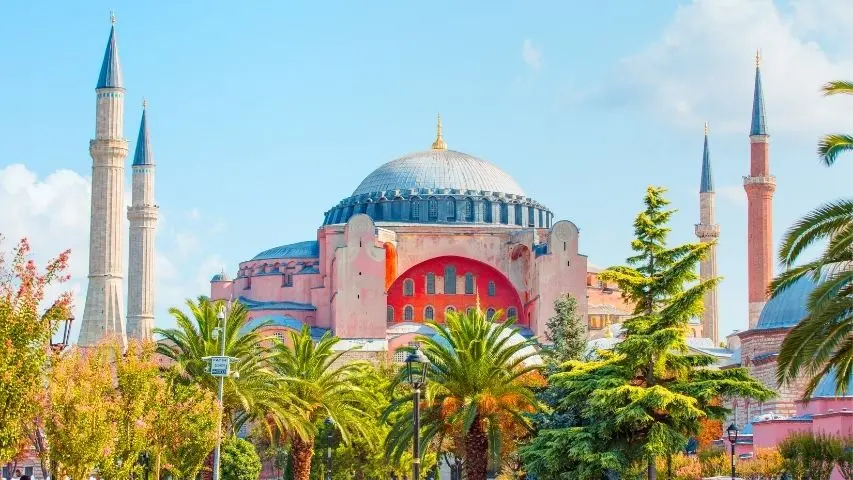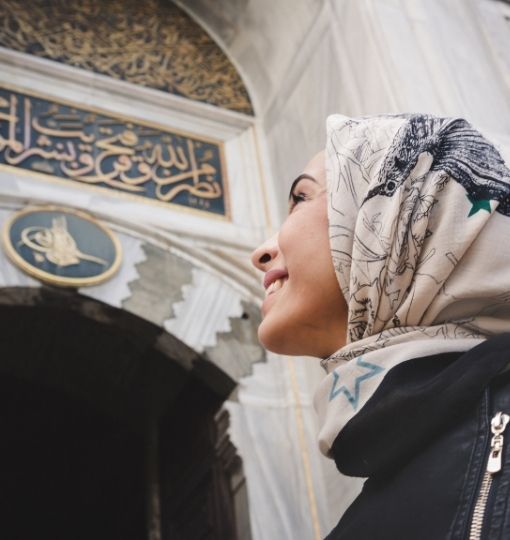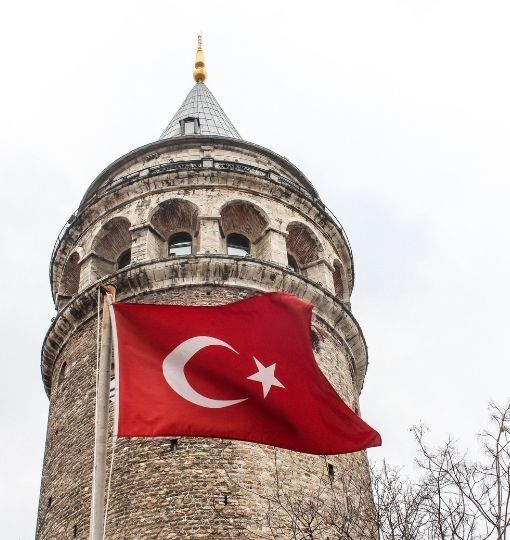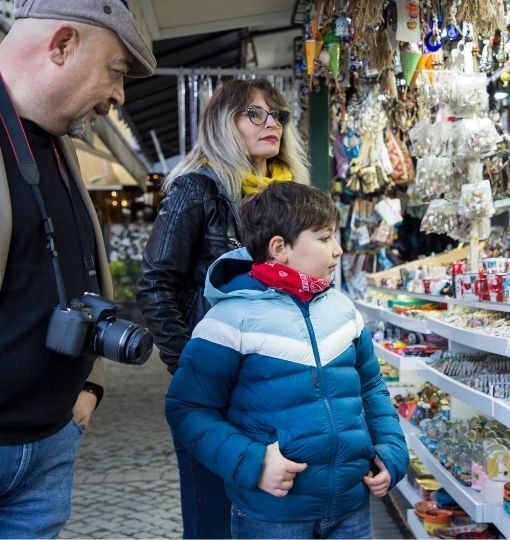Istanbul’s dining scene is ever-changing, yet a handful of venerable eateries stand as living time capsules. These are places where recipes endure for a century, where the decor whispers of sultans and paschas, and where each bite carries the flavors of history.
In this blog-style journey, we visit some of Istanbul’s oldest still-operating restaurants (on both European and Asian shores) that have preserved their culinary traditions for at least a century. Pour a glass of rakı (or boza!) and join this local food lover on a long, leisurely tour of Istanbul’s timeless dining institutions.
Istanbul’s Culinary Mosaic: A City of Flavors
Istanbul eats like it lives, loud, layered, and endlessly curious. At dawn, simit bakers hiss their sesame rings in stone ovens that haven’t cooled since the sultans. By noon, back-alley lokantas spoon out lentil soups thick enough to stand a spoon in, while fishmongers shout the day’s catch along the Golden Horn. Istanbul loooves to eat and drink. Come nightfall, rakı glasses clink beside meze plates bright with Aegean olive oil, and somewhere a pide master slides another boat-shaped crust into a wood-fired chamber that smells of oak and history.
This is a city where Byzantine monks once fermented boza, where Armenian and Greek artisans refined pastry craft, where Balkan immigrants gifted us flaky börek, and where Ottoman palace chefs merged Silk Road spices with French technique. Every district still carries its own scent: the smoky kokoreç stalls of Üsküdar, the sweet mastic breeze around Kadıköy’s patisseries, the tang of salep in wintery Vefa. Istanbul’s secret is synthesis—it layers flavors the way it layers tiles on a mosque dome, creating something both ancient and urgently alive.
100-Year-Old Restaurants Still Serving Istanbul Today
Istanbul is often described as a city where East meets West, past meets present – and nowhere is that more evident than at the dinner table. Dining at these century-old establishments isn’t just about satisfying hunger; it’s about savoring continuity in a city of constant reinvention. Each restaurant here is a story of resilience: recipes surviving through wars, migrations, and urban upheaval; family traditions upheld or master-apprentice chains unbroken.
From the dignified silence of Hacı Abdullah’s dining hall to the rowdy cheer of Cumhuriyet Meyhanesi at midnight, these places offer more than meals – they offer cultural memory on a plate. So next time you find yourself in Istanbul, take a break from the new and shiny. Instead, step into one of these culinary time machines. Order the dishes your great-grandparents might have eaten, raise a toast (be it with rakı, boza, or a strong Turkish tea) to the layers of history around you, and enjoy an edible journey through time. Let's have a look at the top 10 restaurants still serving today!
Hacı Abdullah Lokantası (est. 1888 – Beyoğlu, Ottoman Cuisine)
One of the oldest restaurants in the city, Hacı Abdullah Lokantası opened in 1888 by imperial decree of Sultan Abdülhamit II. Originally known as Abdullah Efendi and located by the Karaköy docks, it was Istanbul’s first tescilli (registered) restaurant – a stylish Ottoman take on European fine dining. Over the decades it moved to Beyoğlu’s İstiklal Avenue and eventually settled near Ağa Mosque, handed down not from parent to child but ustadan çırağa – from master to apprentice – in the antique Ahilik guild tradition.
Stepping inside, you’ll notice shelves lined with jewel-colored komposto (fruit compotes) and stained-glass skylights. The menu reads like an Ottoman palace cookbook: tender lamb Hünkarbeğendi (Sultan’s Delight), quince and apricot stews, and pilafs studded with pine nuts and currants. In fact, Hacı Abdullah’s kitchen preserves about 1,500 classic recipes, rotating about 150 of them seasonally without major changes.
Through world wars and regime changes, they’ve kept the same flavors – so much so that grandchildren of Ottoman-era patrons swear the dishes taste just as they remember. Dining here feels like time travel: the waiters (many lifelong employees) still wear traditional vests, and the atmosphere is quietly devotional to good food. Don’t skip the ayva tatlısı (quince dessert) or a refreshing spoon of vişne kompostosu (sour cherry compote) to truly taste history.
Pandeli Restaurant (est. \~1901 – Eminönü, Ottoman/Turkish with Greek Heritage)
Hidden atop the Spice Bazaar in Eminönü is Pandeli, a century-old culinary icon famed for its turquoise Iznik tiles and storied past. Pandeli was founded by Pandeli Çobanoğlu, an Anatolian Greek who arrived in Istanbul as a young man around the turn of the 20th century. He started as a modest street vendor selling meatballs to harbor porters, but his flavorful cooking soon attracted journalists, writers – even Mustafa Kemal Atatürk himself.
Pandeli’s little eatery survived the collapse of an empire, two World Wars, and even the deadly Istanbul pogrom of 6–7 September 1955, which targeted Greek businesses. After that turmoil, Pandeli moved his restaurant to its current airy premises above the Egyptian Spice Bazaar, where it remains a living museum of Old Istanbul. Walking up the worn stairs, you enter a sunlit hall covered in blue ceramic tiles and black-and-white photos of luminaries. Audrey Hepburn, Queen Elizabeth II, Sean Connery – they’ve all dined under Pandeli’s roof. The third generation now runs the place, keeping specialties unchanged.
Locals insist on the charcoal-grilled döner kebab, served in Pandeli’s style with a slice of eggplant pie and rich gravy. Other favorites include Hünkarbeğendi (smoky eggplant purée topped with lamb stew) and keşkek wheat stew crowned with slivers of Kastamonu pastırma. For dessert, the caramelized kazandibi milk pudding or sticky-sweet ayva tatlısı arrive as sweet testaments to tradition.
After a brief closure in 2016, Pandeli was revitalized and reopened in 2018 – and thankfully so. Sitting by the latticed window, gazing at the ferry-filled Golden Horn while savoring recipes from another age, one truly feels Istanbul’s old soul alive on a plate.
Yanyalı Fehmi Lokantası (est. 1919 – Kadıköy, Anatolian/Ottoman Home Cooking)
In the bustling Kadıköy Market on the Asian side, Yanyalı Fehmi Lokantası has been dishing up Ottoman comfort food since 1919. Its founder, Fehmi Sönmezler, hailed from Ottoman Yanya (Ioannina in today’s Greece), bringing Balkan flavors to Istanbul. The lore goes that Fehmi Bey, after years working in construction, met a retired Ottoman palace chef and convinced him to open a restaurant together. They set up a humble lokanta by the Kadıköy ferry docks (next to İskele Camii), with Fehmi eager to learn the secrets of imperial cuisine.
Over a century later, the Sönmezler family still runs the place, and it remains true to its roots as a bridge between palace kitchen and home kitchen. Many dishes on the menu are the very same that Fehmi and Chef Hüseyin Efendi first served when Atatürk launched the War of Independence in 1919. You can still order Papaz Yahnisi (a priest-style beef stew in tangy sauce) or Elbasan Tava (lamb baked in yogurt sauce) just as Istanbulites did a hundred years ago. Their Albanian-style pırasalı börek (leek pie) and hearty paça (tripe soup) have been crowd-pleasers across generations.
Yanyalı Fehmi’s secret to consistency is an old-school “alaylı” kitchen culture – all the cooks learn by apprenticeship, not from culinary schools. This means recipes are passed down like family heirlooms, remaining unaltered by passing fads. The dining room itself is unpretentious and homey, with tiled walls and a mosaic of vintage photos. Regulars – from local shopkeepers to high-profile politicians – come for a taste of authentic Ottoman-era cooking, be it stuffed grape leaves or almond chicken pudding. In a rapidly changing city, Yanyalı Fehmi stands like a welcoming grandmother in the neighborhood, ladling out nostalgia by the spoonful.
Kanaat Lokantası (est. 1933 – Üsküdar, Tradesmen’s Turkish Cuisine with Balkan Twist)
In Üsküdar, on Istanbul’s Asian shore, Kanaat Lokantası bustles from dawn till midnight, feeding everyone from imams to office workers since 1933. This is the quintessential esnaf lokantası, or tradesmen’s canteen; a big, no-frills cafeteria where you simply point at gleaming trays of food and let hearty stews and veggies nourish you. Kanaat was founded by the Kargılı family, Albanian Turks who migrated from Skopje in 1915, during the last sultan’s reign. The family started out selling helva sweets and goat’s milk ice cream from pushcarts, and their dairy heritage lives on in Kanaat’s famous kaymak (clotted cream) and muhallebi (milk puddings).
Generations later, the same family still runs the restaurant, and remarkably, they haven’t modernized much at all. The interior has simple wooden tables and a constant clatter of trays; at peak lunch hour, finding a seat is a competitive sport. But once you have a spot, you’re in for comfort food paradise. One glass case displays dozens of zeytinyağlı dishes, green beans, artichoke hearts, and eggplant, all braised to silky perfection in olive oil. Another counter is laden with steaming yahni casseroles, various kebabs, and Uzbek pilaf layered with spiced lamb and carrots.
Regulars swear by the delicate yaprak sarma (stuffed grape leaves) and the signature goat milk vanilla ice cream, which owes its stretchy richness to wild orchid root (salep). For dessert, Kanaat’s selection is dazzling: candied pumpkin slices glistening in syrup, bowls of aşure (Noah’s pudding with fruits and nuts), baked rice pudding with a caramelized top, and the legendary keşkül almond pudding that sells out daily (trust me, don’t skip it).
Through wartime shortages, economic crises, and the rise of credit cards (Kanaat famously accepts only cash, true to old Istanbul habits), this restaurant has weathered it all by simply sticking to what it does best: feeding people real Turkish home-cooking. It’s a delicious constant in a sea of change, and when you savor a spoon of warm pumpkin dessert under its neon lights, you feel a comforting continuity with Üsküdar generations past.
Cumhuriyet Meyhanesi (est. \~1923 – Beyoğlu, Historic Meyhane Tavern)
No tour of old Istanbul eateries would be complete without a classic meyhane, and Cumhuriyet Meyhanesi in Beyoğlu is the granddaddy of them all. Tucked in a side street off İstiklal Avenue, this three-story tavern has been pouring rakı and serving meze since the early years of the Republic (hence the name “Cumhuriyet”).
In fact, its exact founding is a bit hazy – the venue existed under Greek proprietors before 1923, but took on the name “Cumhuriyet” around the time Atatürk founded the nation. What’s certain is that for over 100 years, poets, musicians, journalists and regular Istanbul folk have whiled away nights here over lively conversation and clinking glasses.
The atmosphere remains delightfully old-school: checkered tablecloths, portraits of Atatürk on the walls, and wandering musicians playing Turkish classical fasıl music on the upper floor every evening. Famously, Mustafa Kemal Atatürk himself frequented this meyhane – an upstairs corner table (Table No. 5) was reserved as his, where he would sip Kulüp Rakısı and munch on white roasted chickpeas. That very table is still preserved as a shrine of sorts; each year on November 10 (the anniversary of Atatürk’s passing) the owners adorn it with flowers and offer guests complimentary leblebi in his memory.
Anecdotes flow as freely as the rakı here: for decades the dining room was presided over by the “Üç Ali,” three veteran waiters all named Ali who became minor legends (even inspiring a poem by Ece Ayhan). As for the food, expect a meze lover’s dream. Every day the kitchen prepares around 100 different meze plates – from garlicky eggplant salad to tangy stuffed mussels and Armenian-style lakerda (brined tuna). Grilled fish and Anatolian hot dishes are available too, but grazing on cold mezes with endless toasts of rakı is the classic way to enjoy Cumhuriyet.
Despite the trendy bars encircling it, this meyhane resists change – no modern fusion or DJ music, thank you. Instead, you get the clatter of forks, the chorus of long-time patrons singing along to a saz, and that warm, convivial Istanbul spirit that has drawn people here for a century. As you take a sip and join the chorus of “Şerefe!”, you can feel the history around you in the patina of the wood panels and the well-loved marble bar.
Tarihi Sultanahmet Köftecisi (est. 1920 – Fatih/Sultanahmet, Turkish Meatball Legacy)
In the old city’s Sultanahmet quarter – surrounded by Byzantine ruins and Ottoman mosques – there sits a humble grilled meatball shop that has quietly thrived for 105 years. Tarihi Sultanahmet Köftecisi was founded in 1920 by Mehmet Seracettin Efendi, who had migrated from Central Asia and sought to make his way in the newly forming Turkish Republic. He started selling köfte from a tiny shop near the Sultanahmet tram stop, calling it “Turan Köftecisi” in a burst of early patriotic spirit.
Over time and a few location changes (the family moved the shop a few doors down in the 1960s due to redevelopment), the name evolved too – eventually becoming Sultanahmet Halk Köftecisi and later adding “Tarihi” (historic) and “Selim Usta” to honor one of the founding sons. Name changes aside, what has never changed is the köfte itself.
The recipe is absurdly simple – 100% beef minced with just bread, salt, and a touch of onion, absolutely no spices. These springy little meatballs are grilled over charcoal and served with a dollop of tangy mustard, a pile of crusty bread, and optional sides like bean salad and semolina helva. The restraint in seasoning lets the quality of the meat shine, and it clearly worked: locals and tourists alike flock to this unpretentious two-story diner for “the real Sultanahmet köfte” experience.
Four generations of the Tezçakın family have run the business, turning down countless offers to franchise or modernize in ways that might compromise tradition. In fact, the family attributes their longevity to treating the restaurant as a way of life – each new generation working alongside their elders and even choosing spouses who appreciate the köfte trade!. Through the tumult of the 20th century – from the early Republic’s upheavals to the tourist booms of the 21st – this little shop stuck to its straightforward mission: grill up delicious meatballs, serve them with a smile.
The interior is basic and perpetually packed, the walls modestly adorned with black-and-white photos and a proud banner of “1920”. They’ve never needed flashy marketing (they famously never even paid for ads; satisfied customers have been their best publicity). If you find yourself exploring the Blue Mosque or Hagia Sophia and hunger strikes, pop into this time-honored köfteci. You’ll taste the simple, hearty flavors that fueled a city a century ago, and likely rub shoulders with a mix of construction workers, celebrities, and backpackers – proof that good köfte speaks a universal language.
Baylan Pastanesi (est. 1923 – Kadıköy, Historic Patisserie & Café)
Not all culinary time machines serve heavy meals – some specialize in the sweet pleasures of life. Baylan Pastanesi, founded in 1923, is a legendary old-school pastry shop that introduced Istanbul to European confections and café culture. It was opened by Filip Lenas, an Albanian-Greek confectioner trained in a famous French chocolaterie, together with his cousin Yorgi Kiriçiz.
Filip started his first little shop (then called “Loryan”) in Beyoğlu’s Deva Çıkmazı alley, right when the Ottoman era was giving way to modern Turkey. In those roaring 1920s, Baylan quickly became one of the cosmopolitan pâtisseries of Pera, holding its own among peers like Lebon and Markiz as a gathering spot for Istanbul’s literati. Over time Baylan expanded to Karaköy (1925) and eventually Kadıköy (1961).
Today, the Kadıköy branch carries the torch of this sugary heritage. Walking in, you’re greeted by an old-world ambiance: mosaic-tiled floors, mirrored displays of chocolate truffles and marzipan, and the soft whir of ceiling fans. Baylan’s menu still features many of the same treats from a century ago, but its crowning glory is the Kup Griye – a sundae that has itself become the stuff of legend.
Invented in 1954 by Filip’s son Harry Lenas, the Kup Griye (from coupe grillée, meaning “toasted cup”) layers vanilla and caramel ice cream with whipped cream, toffee sauce, and crunchy caramelized almonds. Remarkably, Harry’s original recipe hasn’t changed one bit in over 70 years. One mouthful of this cool, creamy delight and you’ll understand why Istanbul old-timers still dream about it. Baylan offers other retro specialties too: the Montrö chocolate mousse cake, Adisababa (rum-soaked chocolate cake), and truffle chocolates that once won gold medals in Europe.
Generations of Istanbul families have made Baylan a ritual – grandfathers who brought their sweethearts here in the 1940s now treat their grandkids to ice cream on the same chairs. In a city that often rushes forward, Baylan is a gentle reminder to slow down. Sit by the window with a Turkish coffee and a slice of cake, and watch the Kadıköy street life outside. For a moment, you might imagine you’re back in polyglot 1920s Istanbul, when a well-dressed crowd might stroll in speaking Turkish, Greek, Armenian, Ladino – all united in love of something sweet.
Vefa Bozacısı (est. 1876 – Vefa/Fatih, Traditional Boza Shop)
Our final stop isn’t a restaurant per se, but it’s a cornerstone of Istanbul’s culinary history that can’t be ignored. In the old neighborhood of Vefa in the old town, nestled in the shadow of a 4th-century aqueduct and a stone’s throw from Süleymaniye Mosque, stands Vefa Bozacısı – a tiny two-story shop where time ferments as slowly as the product it sells. Boza is a thick, tangy fermented grain drink (usually made from millet or bulgur) that was wildly popular in the Ottoman era.
Vefa Bozacısı was opened in 1876 by Hacı Sadık Bey, an Albanian from Prizren, who perfected a particular recipe for boza that was smoother, lighter in color, and more refined than the boza sold by the dozens of street vendors of that time. In fact, Hacı Sadık is credited with standardizing boza as we know it – he set up the first dedicated boza shop and established this as a family trade that now spans four generations. Walking into Vefa Bozacısı truly feels like stepping into the 19th century.
The wooden doors open to a narrow space with high ceilings; the tile floor has been worn by countless footsteps. On one side, marble counters hold large broad-bellied glass jars filled with the day’s boza, quietly bubbling as it ferments. Shelves are lined with bottles of vinegar and şıra (another Ottoman drink), and framed old photographs and letters from famous patrons adorn the walls. If you visit on an Istanbul winter evening (the traditional boza season), you’ll likely find the place packed shoulder-to-shoulder with people jostling to get a cup.
There’s no seating – this is the kind of place where you stand and sip. You order a glass of boza topped with a sprinkle of cinnamon and a handful of crunchy roasted chickpeas, and kaşıklarsın – you eat it with a spoon, since true boza is almost pudding-thick. The first spoonful might surprise you: it’s cool, tart, slightly sweet, and strangely comforting, almost like a porridge. As you savor it, take a look around. You might notice a very old glass on a high shelf – local lore says it’s the cup from which Atatürk himself drank boza during a 1937 visit. Whether that’s true or not, it’s a good story to toast to. And indeed, sipping boza at Vefa is less about the drink’s slight alcoholic buzz (it’s very mild) and more about the warm buzz of nostalgia.
The shop’s threshold is literally grooved from 100+ years of footsteps; when you step back out onto Vefa Caddesi, you feel like you’ve communed with the ghosts of winters past. As the New Lines Magazine aptly put it, Vefa Bozacısı has protected this Ottoman tradition “with a flourish since 1876,” transporting visitors to a different time. It’s a sweet, slightly tangy portal to old Istanbul.
Borsa Lokantası (est. 1927 – Tradition Meets Modern, multiple locations)
Established in 1927 in the heart of old Eminönü’s commodity exchange district, Borsa Lokantası represents how an eatery can adapt over a century while still honoring tradition. The restaurant took its name “Borsa” (meaning exchange) from Zahire Borsası Sokak where Münir Bey first opened its doors.
In those early republican days, Borsa was known for serving classic Turkish dishes to bureaucrats, traders, and Istanbul’s business elite – think hearty casseroles, stuffed vegetables, and grilled meats, done with just a bit more polish and service than an average lokanta. After Münir Bey passed, the restaurant changed hands and locations (moving to Sirkeci in the 1980s) but nearly closed for good in 1985. That’s when the Özkanca brothers stepped in, buying Borsa and essentially rescuing a piece of Istanbul heritage. They modernized its management but not its soul.
Throughout the late 20th century, Borsa became renowned for showcasing the best of Turkish and Ottoman cuisine, serving 1,000+ people a day at its peak while maintaining the quality of a fine esnaf lokantası. They even pioneered a Turkish “fast food” concept at one point – though instead of burgers and fries, Borsa’s idea of fast food was freshly cooked Turkish home fare served cafeteria-style!. In the 1990s, under visionary restaurateur Rasim Özkanca, Borsa stepped into a new role: as one of the first fine dining expressions of Ottoman cuisine.
The Boğaziçi Borsa Restaurant, which opened in the glass-walled Lütfi Kırdar Congress Center above Taksim, offered old-fashioned recipes like hünkarbeğendi, lamb testi kebab, and zeytinyağlı artichokes in an elegant contemporary presentation. It was a hit, and soon a second upscale branch opened inside the Adile Sultan Palace in Kandilli – a literal Ottoman palace setting where Borsa’s chefs reimagine 19th-century court dishes for modern palates. So in a way, Borsa has come full circle: from a hearty republican-era eatery serving traditional dishes, to nearly fading away, to being reborn as a guardian of culinary heritage in a chic guise.
Today, whether you visit the casual self-service Borsa in Osmanbey for a quick lunch of eggplant moussaka, or treat yourself to a sunset dinner at the palace tasting Ottoman classics, you are experiencing the continuum of Istanbul’s food history. The ingredients and recipes are timeless – rich tencere yemekleri (one-pot stews), zeytinyağlı vegetables as refined as those once cooked in imperial kitchens – but Borsa has shown that honoring tradition doesn’t mean living in the past. It’s about letting the past live on in the present, deliciously so. After surviving financial crashes, changing cityscapes, and even a pandemic or two, Borsa Lokantası still stands as a symbol that Istanbul can cherish its culinary past even as it strides into the future.
Discover More with the Istanbul Tourist Pass®
If this culinary time-travel whets your appetite for the rest of the city, the Istanbul Tourist Pass® is your all-access key. One fully digital pass (choose 1-, 2-, 3-, 4-, or 5-day options) unlocks 100+ attractions and services—skip-the-line entry to icons like Hagia Sophia, Topkapı Palace, and Dolmabahçe; Bosphorus cruises by day or night; audio guided neighborhood walks from Balat to Kadıköy; even airport transfers and a handy city-wide transportation card.
Families love it because kids jump between museums and aquariums without extra tickets; solo travelers love it because audio guides and small-group tours add instant company and expert insight for an extra to hire a private guide. Everything lives on your phone, so you can wander from a century-old köfte shop straight into a Byzantine cistern tour without breaking stride—or budget. In short, the pass lets you taste, see, and feel far more of Istanbul, leaving you free to focus on the important stuff: your next bite, your next view, and that inevitable next glass of rakı.
Sources: Each restaurant’s details were gathered from historical archives, interviews, and official websites, including restaurant histories and Turkish press articles, to ensure authenticity. Citations are provided in the text for direct historical references. Enjoy the read and the flavors!

















